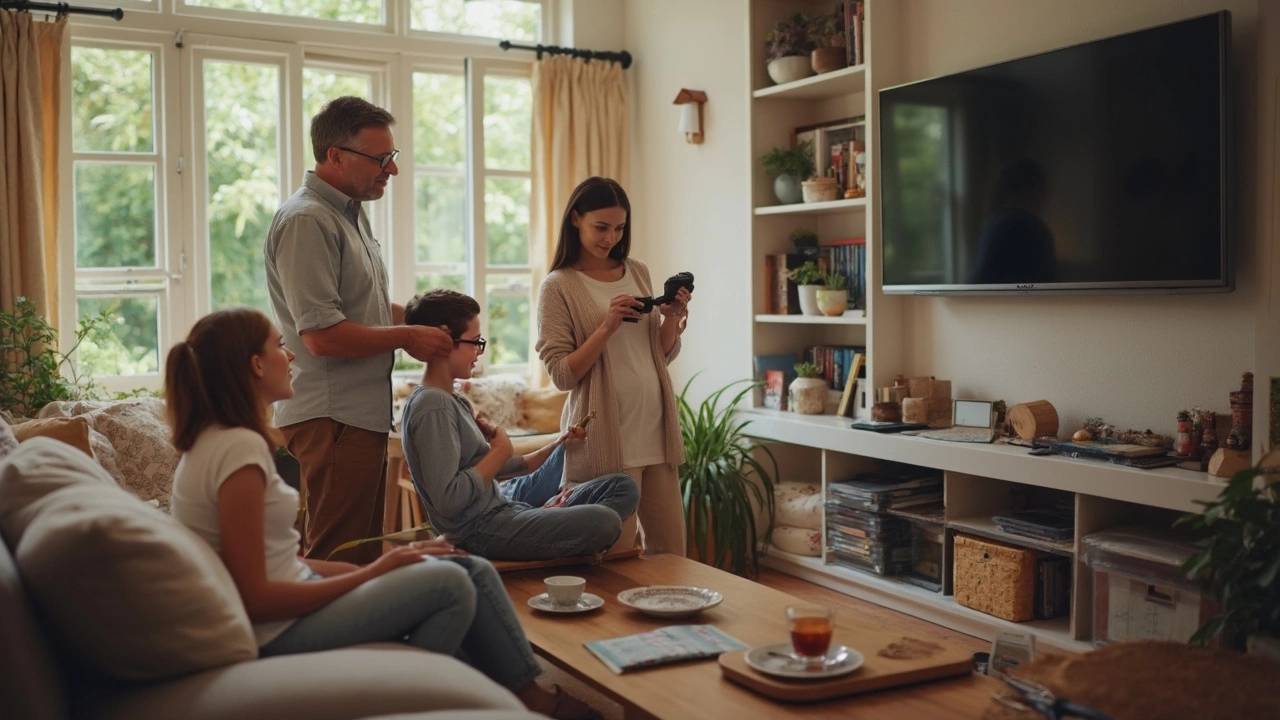TV Positioning: Practical Tips for the Best Viewing Experience
Getting the TV in the right spot can make a huge difference in how comfortable your living room feels. It’s not just about looking good – it’s about seeing clearly, avoiding eye strain, and keeping everything safe.
Finding the Right Viewing Distance
The first thing to sort out is how far the sofa should sit from the screen. A good rule of thumb is to measure the diagonal length of your TV and multiply it by 1.5 to 2.5. So a 55‑inch TV works best when you’re sitting about 6.8 to 11.5 feet away. If you love cinema‑style immersion, aim toward the higher end; for casual TV watching, the lower end is fine.
Don’t forget the height of the screen. The center of the picture should line up with your eyes when you’re seated. That usually means the middle of the TV sits about 42 inches from the floor, but adjust based on how high your sofa back is. A quick glance at the TV’s center while you sit will tell you if you’re too low or too high.
Safe and Stylish TV Placement
When it comes to the actual spot, consider both the stand and wall‑mount options. A TV stand should be at least as wide as the TV itself; for a 55‑inch set, aim for a stand that’s 50‑55 inches wide. This prevents the TV from overhanging and gives you room for speakers or décor.
If you prefer a wall mount, avoid placing the TV over a fireplace or directly above a window where glare is a problem. Also, keep the mount at least a few inches away from the edge of the wall studs to prevent stress on the bracket. Use a stud finder and anchor the screws into solid wood for maximum safety.
Lighting matters, too. Position the TV where natural light doesn’t hit the screen head‑on. Heavy curtains or blinds can help control glare without sacrificing style. If you have recessed lights, angle them away from the TV or use dimmers to keep the picture crisp.
Think about the flow of the room. The TV shouldn’t block traffic paths or create a cramped feeling. Leave at least a foot of clearance around the TV stand or mount to let people move comfortably.
Finally, check for common mounting mistakes. Don’t mount a TV on a surface that can’t bear the weight – a flimsy bookshelf is a bad idea. Avoid using drywall anchors alone; they can pull out under the TV’s weight. And never ignore the recommended VESA pattern on the back of the TV – matching the bracket ensures a secure fit.
By measuring the distance, setting the height right, picking the proper stand or mount, and managing light and traffic, you’ll create a viewing area that looks great and feels comfortable. Adjust these basics to fit your room’s shape, and you’ll enjoy movies, games, and shows without the usual headaches.
High or Low? Picking the Right TV Stand Height
Wondering if your TV should sit high or low? This article looks at why TV height matters, and how it affects your comfort, your neck, and even the look of your living room. We’ll cover what to measure, common mistakes, and how to figure out the best position for both binge-watching and gaming. You’ll also find practical tips for choosing or adjusting your TV stand. By the end, deciding on that perfect TV height actually gets simple.
More
